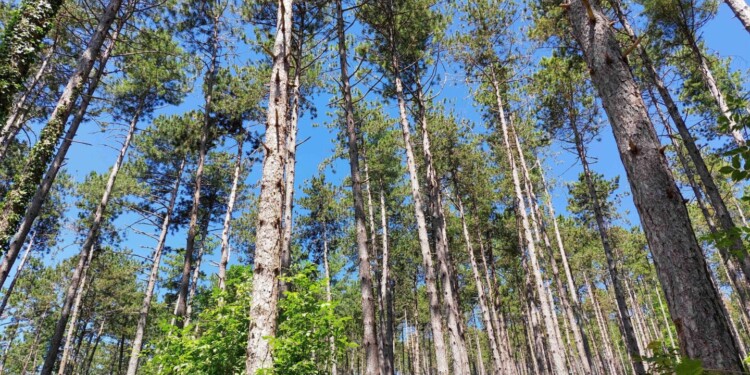The tree planting business is booming globally, with each year bringing new start-ups that fill a different gap in the reforestation market. This market is in such a state today that its evolution can amaze even those keenest on environmental trends. Yet not all is well with tree planting in relation to the overall goal of restoring the environment and fighting climate change. Here we are exploring what is wrong and how to set it right.
Let’s start with what’s right about tree planting: It’s a booming industry. Tree planting is in fact not only becoming a ubiquitous policy practice for firms, as endeavors by multinational companies like Apple, Mondelez, or Nestlè have shown in recent times: it is also stimulating the birth of companies that have reforestation efforts as the core activity of their business model.
The most staggering perspective from which to look at this growth is through the sheer increase in income and trees planted for each business. Ecosia, a non-profit search engine that finances tree planting through each web search of its users, is a significant example. The company discloses financial reports each month, showing how much money it has made and how many trees it has planted that month.
In December 2015, the company reported 133,000 euros in total income and around 200,000 financed trees. In December 2019 income scraped 2.5 million and trees financed were almost 10 million.
Getting quite a few new followers so here's some key facts:
▪️ income? from sponsored search results
▪️ trees planted? 129 million in 30 countries (so far)
▪️ privacy? we don't keep or sell your data
▪️ footprint? negative (not even including the trees!)— Ecosia (@Ecosia) July 6, 2021
Ecosia is however one of the most successful and profitable models of a reforestation business. Looking at its growth and assessing the quality of the sector through it would be like analyzing Google’s performance to assess the situation of the tech industry.
Yet even smaller, less-known companies seem to flourish. Treedom is one of them. Founded in Florence in 2010, Treedom is an example of a reforestation business based on purchases from the private sector. Companies or individuals finance the tree, while the company organizes its planting and sustains local communities in its long-term management. At the start of 2021, the company had planted 1.5 million trees in total. In just about a year, the figure has doubled and continues to increase.
This cannot but be good news: Environmental sustainability that meets profits, bringing an infusion of hope to the fight against climate change. Impakter has already highlighted the importance of tree planting many times. It is indeed a practice that absorbs carbon dioxide, can prevent erosion of lands and benefit agricultural communities.
When tree planting goes wrong
Yet, planting trees the wrong way could harm the ecosystem in which they are brought in, rather than benefit it. Catrin Einhorn has recently shed light on this issue for the New York Times, underlining how crucial it is to plant “the right tree in the right place”. In fact, she details how the new planting effort announced by TotalEnergies, a French oil and gas giant, would undermine biodiversity and GHG absorption.
The project, to be carried out in the Congolese Batéké plateau (a stretch of grassed savanna with patches of forests), would entail planting trees where they are not supposed to be present. Such action can “devastate biodiversity, threaten water supplies, and even increase temperatures because, in some cases, trees absorb heat that grasslands […] would have reflected”.
It is therefore essential for consumers and investors to know how to effectively plant trees.
Fortunately, humans particularly enjoy finding solutions to the problems that they themselves create: Below is a list of “10 golden rules for reforestation to optimize carbon sequestration, biodiversity recovery and livelihood benefits,” as published in the Global Change Biology review
- Protect existing forests first
Even if re-plating efforts may be more marketable, as they are associated with a spirit of initiative and creation, protecting currently standing forests is the easiest and cheapest way to fight deforestation. Prioritize support for forestry protection.
- Work together
Local people should be made part of the project. Look for proof of interaction with local communities and grassroots economic and social benefits
- Aim to maximize biodiversity recovery to meet multiple goals
Deeply value programs that foster biodiversity, as this carries positive externalities that benefit other goals like carbon sequestration and socio-economic development.
- Select appropriate areas for reforestation
Exactly the opposite of what is happening in the Batéké plateau: Check if the area of a program was previously a forest.
- Use natural regeneration whenever possible
Just like protecting forests, supervising their natural regeneration is the best practice to ensure there are no reversals on biodiversity
- Select species to maximize biodiversity
The newly planted species must fit with the present ones. Beware of programs that do not mention the type of species that will be implemented.
- Use resilient plant material
Check that the genetic variability of seeds is accounted for.
- Plan ahead for infrastructure, capacity and seed supply
The best way to assess if the program is well structured is to look for past initiatives: How did they turn out?
- Learn by doing
This rule tells organizations to base their plans on data. If you don’t see convincing figures in their analyses and pitches, disregard it.
- Make it pay
Programs that produce value for their stakeholders will attract more investors, which in turn will provide more financing and, eventually, more trees planted. The organization should disclose how it intends to create income streams from the project.
These are clearly reasonable and practical rules to ensure companies and organizations achieve the intended goal of preserving/restoring the environment and effectively contribute to fighting climate change.
One last point and it concerns rule number two in the above list: to succeed with tree planting projects, there is a paramount need to “work together” with local communities, a point that is amply made by the Global Change Biology review in their article as they devote a whole section to it. This collaboration should start from the first to the last day of any tree planting project, as they put it: “For successful outcomes in both forest protection and reforestation, it is vital to include local communities from the planning stage through to delivery and monitoring.”
Editor’s Note: The opinions expressed here by Impakter.com columnists are their own, not those of Impakter.com — In the Featured Photo: Trees in a forest. Featured Photo Credit: Leonardo Bartoli.








